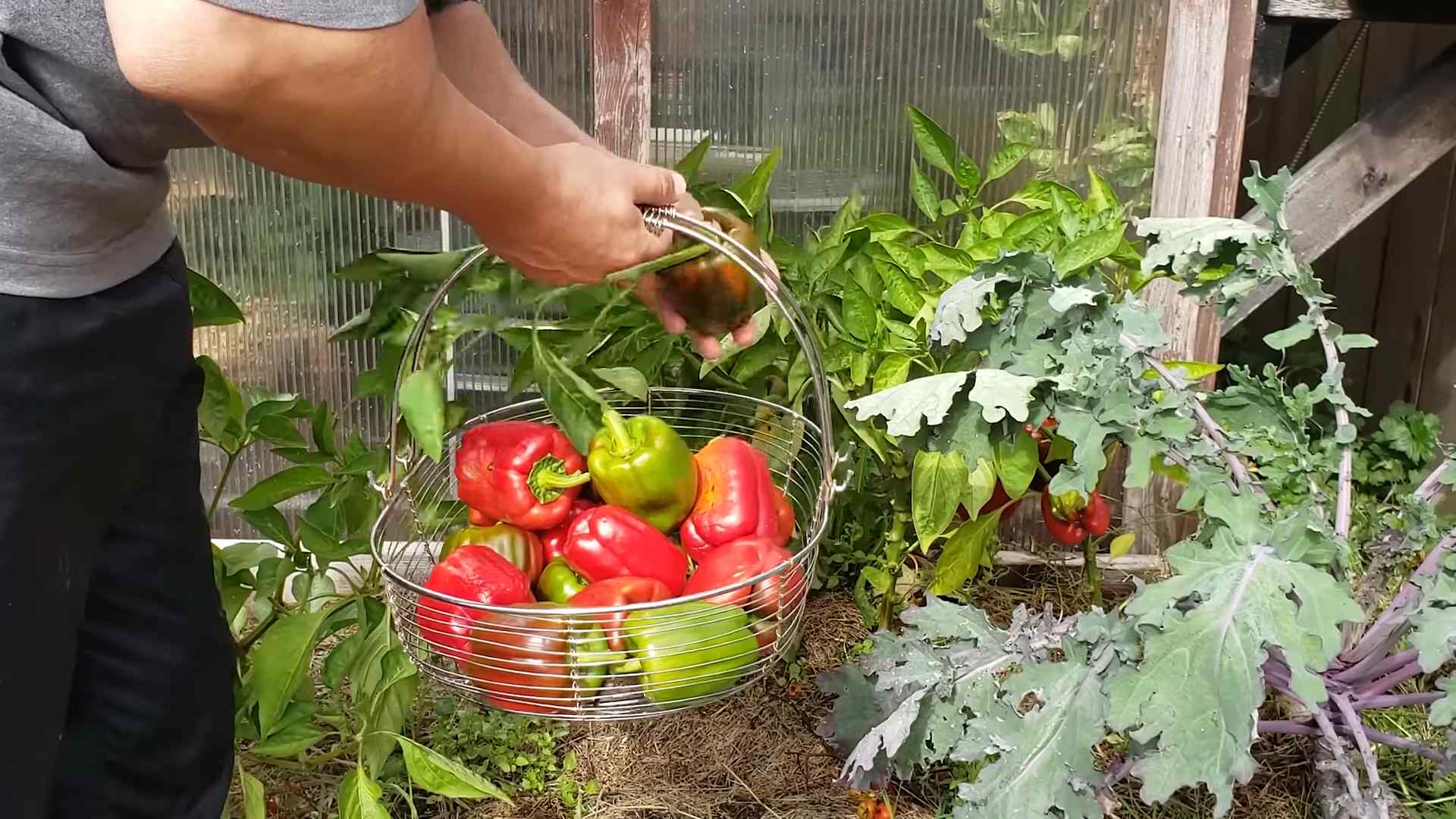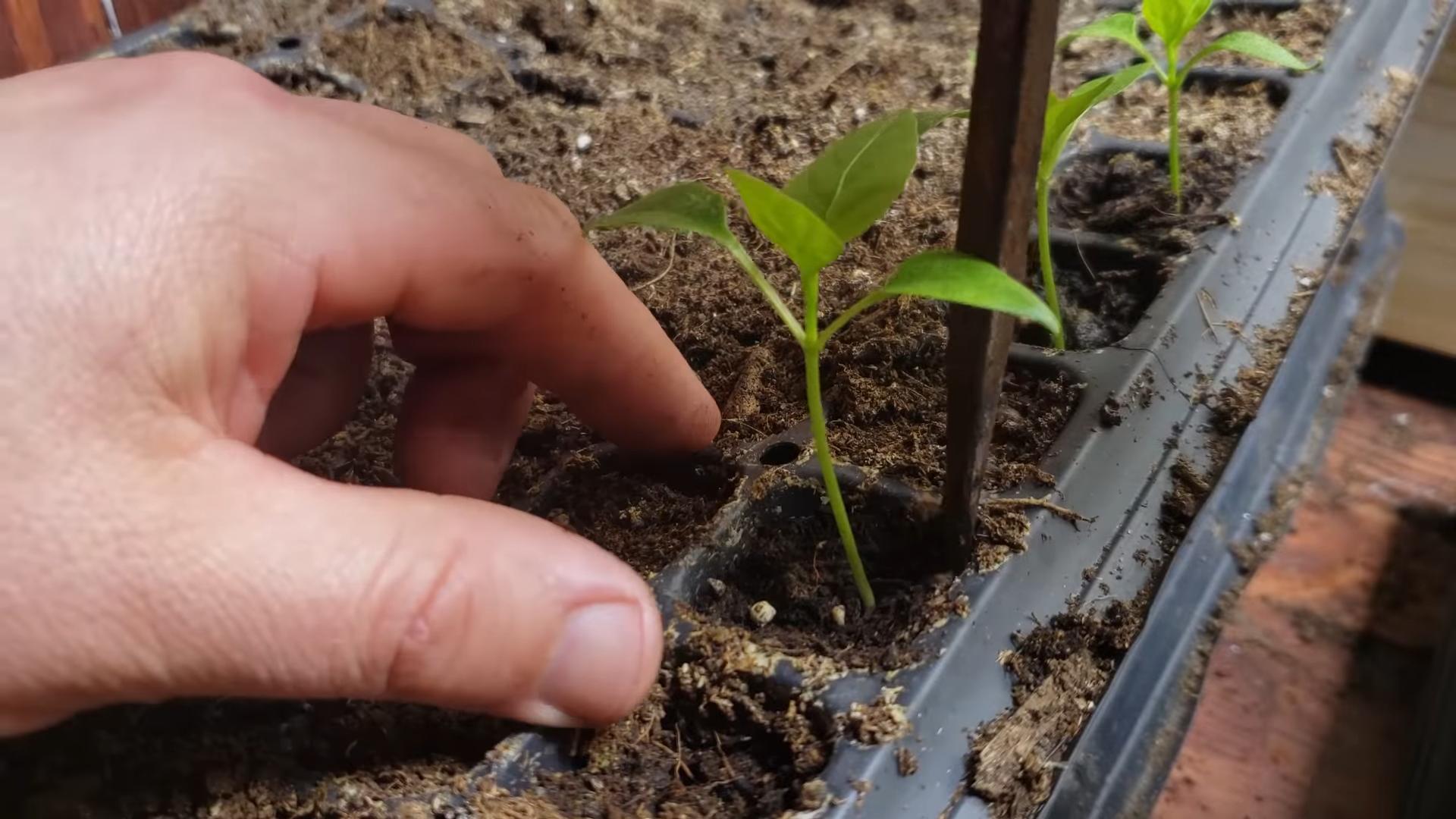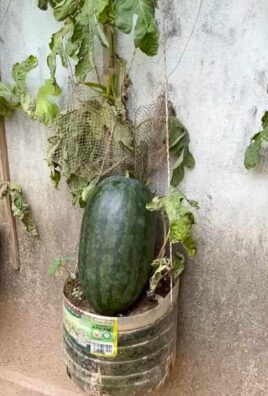Small Space Pepper Growing can feel like a daunting task, especially if you’re dreaming of a vibrant pepper harvest but are limited by a tiny balcony, a small patio, or even just a sunny windowsill. But don’t let limited square footage squash your spicy dreams! For centuries, people have cultivated peppers in containers, from the ancient Aztecs who first domesticated these fiery fruits to modern urban gardeners seeking fresh, homegrown flavor.
I’m here to tell you that abundant pepper production is absolutely achievable, even without a sprawling garden. This article is packed with clever DIY tricks and hacks specifically designed to maximize your yield when small space pepper growing. We’ll explore everything from choosing the right container size and soil mix to optimizing sunlight and employing vertical gardening techniques.
Why do you need these DIY tricks? Because store-bought peppers simply can’t compare to the taste and satisfaction of harvesting your own. Plus, growing your own allows you to control what goes into your food, avoiding harmful pesticides and ensuring the freshest possible ingredients. So, let’s dive in and transform your limited space into a pepper paradise!

Growing Peppers in Small Spaces: A DIY Guide for Urban Gardeners
Hey there, fellow gardening enthusiasts! Living in a small apartment or condo doesn’t mean you have to give up on the joy of growing your own fresh produce. I’m here to share my tried-and-true method for growing peppers in small spaces, even if you only have a balcony, patio, or sunny windowsill. Get ready to spice up your life with homegrown peppers!
Choosing the Right Peppers and Containers
Before we dive into the nitty-gritty, let’s talk about selecting the right pepper varieties and containers for your limited space. Not all peppers are created equal when it comes to container gardening.
* **Compact Pepper Varieties:** Opt for bushier, more compact pepper varieties. These are naturally smaller and better suited for containers. Some of my favorites include:
* **’Thai Hot’ Peppers:** These are small, prolific, and pack a serious punch!
* **’Jalape帽o M’:** A compact jalape帽o variety that produces plenty of medium-sized peppers.
* **’Sweet Palermo’:** A sweet, elongated pepper that grows well in containers.
* **’Mini Bell’ Peppers:** These adorable little bell peppers are perfect for snacking and container gardening.
* **’Cayenne’:** A classic hot pepper that’s relatively easy to grow in a small space.
* **Container Size Matters:** The size of your container will directly impact the size and yield of your pepper plants.
* **Minimum Size:** Aim for at least a 5-gallon container for most pepper varieties.
* **Larger is Better:** If you have the space, a 10-gallon container or larger will provide even better results.
* **Material:** Choose containers made from plastic, terracotta, or fabric. Make sure they have drainage holes!
* **Drainage is Key:** Peppers hate sitting in soggy soil. Ensure your containers have adequate drainage holes to prevent root rot. I like to add a layer of gravel or broken pottery at the bottom of the container to improve drainage.
Setting Up Your Pepper Growing Station
Now that you’ve chosen your peppers and containers, it’s time to set up your growing station.
* **Sunlight is Essential:** Peppers need at least 6-8 hours of direct sunlight per day to thrive. Choose a location that receives plenty of sunshine. A south-facing balcony or windowsill is ideal.
* **Supplemental Lighting (Optional):** If you don’t have enough natural sunlight, consider using grow lights. LED grow lights are energy-efficient and provide the full spectrum of light that plants need.
* **Vertical Gardening:** If you’re really short on space, think vertically! Use trellises, hanging baskets, or stacked planters to maximize your growing area.
* **Protection from the Elements:** Protect your pepper plants from strong winds and extreme temperatures. Move them indoors or to a sheltered location during severe weather.
Step-by-Step Planting Guide
Alright, let’s get our hands dirty! Here’s my step-by-step guide to planting peppers in containers:
1. **Gather Your Supplies:** You’ll need:
* Pepper seedlings or seeds
* Containers with drainage holes
* High-quality potting mix (not garden soil!)
* Slow-release fertilizer
* Watering can or hose
* Gloves (optional)
2. **Prepare the Potting Mix:** Fill your containers with a high-quality potting mix. Avoid using garden soil, as it can compact and doesn’t drain well in containers. I like to mix in some slow-release fertilizer to provide a steady supply of nutrients.
3. **Planting Seedlings:** If you’re using seedlings, gently remove them from their nursery pots. Loosen the roots slightly before planting. Dig a hole in the potting mix that’s large enough to accommodate the root ball. Place the seedling in the hole and backfill with potting mix. Water thoroughly.
4. **Starting from Seeds:** If you’re starting from seeds, sow them about 1/4 inch deep in the potting mix. Keep the soil moist but not soggy. Germination typically takes 7-14 days. Once the seedlings have developed a few sets of true leaves, thin them out to one plant per container.
5. **Watering:** Water your pepper plants regularly, especially during hot weather. Check the soil moisture by sticking your finger into the soil. If the top inch feels dry, it’s time to water. Avoid overwatering, as this can lead to root rot.
6. **Fertilizing:** Peppers are heavy feeders, so they need regular fertilization. Use a balanced fertilizer or a fertilizer specifically formulated for peppers and tomatoes. Follow the instructions on the fertilizer label. I usually fertilize every 2-3 weeks.
7. **Pruning (Optional):** Pruning can help to improve air circulation and encourage bushier growth. Remove any yellowing or dead leaves. You can also pinch off the tips of the branches to promote branching.
8. **Support (If Needed):** Some pepper varieties, especially those with heavy fruit, may need support. Use stakes or cages to prevent the branches from breaking.
Troubleshooting Common Pepper Problems
Even with the best care, you might encounter some problems while growing peppers. Here are some common issues and how to address them:
* **Aphids:** These tiny pests can suck the sap from your pepper plants. Spray them with insecticidal soap or neem oil.
* **Whiteflies:** Similar to aphids, whiteflies can also damage your pepper plants. Use the same treatment as for aphids.
* **Blossom End Rot:** This is caused by a calcium deficiency. Ensure your soil has adequate calcium and water your plants consistently.
* **Sunscald:** This occurs when peppers are exposed to too much direct sunlight. Provide some shade during the hottest part of the day.
* **Lack of Fruit:** This can be caused by a variety of factors, including lack of pollination, insufficient sunlight, or nutrient deficiencies. Ensure your plants are getting enough sunlight, water, and fertilizer. You can also try hand-pollinating the flowers.
Harvesting Your Peppers
The moment you’ve been waiting for! Harvesting your peppers is the most rewarding part of the process.
* **Timing is Key:** The best time to harvest peppers depends on the variety and your personal preference. Generally, peppers are ready to harvest when they’ve reached their mature size and color.
* **Use Pruning Shears:** Use sharp pruning shears or scissors to cut the peppers from the plant. Avoid pulling them off, as this can damage the plant.
* **Enjoy Your Harvest:** Use your homegrown peppers in your favorite recipes, or preserve them by pickling, drying, or freezing.
Extra Tips for Success
Here are a few extra tips to help you succeed in growing peppers in small spaces:
* **Choose the Right Potting Mix:** Don’t skimp on the potting mix. A high-quality potting mix will provide the nutrients and drainage that your pepper plants need.
* **Water Deeply and Less Frequently:** Water deeply when the soil is dry to the touch, rather than watering lightly every day. This encourages deep root growth.
* **Monitor for Pests and Diseases:** Check your plants regularly for signs of pests and diseases. The sooner you catch a problem, the easier it will be to treat.
* **Rotate Your Crops:** If possible, rotate your crops each year to prevent soilborne diseases.
* **Don’t Be Afraid to Experiment:** Gardening is all about learning and experimenting. Don’t be afraid to try new things and see what works best for you.
Growing peppers in small spaces is totally achievable with a little planning and effort. I hope this guide has inspired you to start your own urban pepper garden. Happy gardening, and enjoy the fruits (or should I say, peppers!) of your labor!

Conclusion
So, there you have it! Transforming your limited area into a thriving pepper paradise is not only achievable but surprisingly simple with this DIY trick. We’ve shown you how to maximize your yield, minimize your space requirements, and enjoy the satisfaction of harvesting your own fresh, flavorful peppers, even if you only have a balcony, patio, or sunny windowsill.
Why is this a must-try? Because it empowers you to take control of your food source, reduce your reliance on store-bought produce (often shipped from far away), and experience the joy of gardening, regardless of your living situation. Imagine the vibrant colors and spicy aromas filling your small space, a constant reminder of the delicious meals to come. Plus, growing your own peppers allows you to choose varieties that you might not find in your local grocery store, opening up a world of culinary possibilities.
But the benefits don’t stop there. This DIY approach is also incredibly cost-effective. By starting with seeds or small seedlings and utilizing readily available materials, you can significantly reduce the financial burden of buying peppers regularly. And let’s not forget the environmental impact. Growing your own food reduces your carbon footprint by minimizing transportation and packaging waste.
Ready to take your small-space pepper growing to the next level? Consider these variations:
* **Vertical Gardening:** Explore vertical gardening techniques using stacked planters, hanging baskets, or even repurposed pallets to maximize your vertical space. This is especially useful for vining pepper varieties that need support.
* **Companion Planting:** Introduce companion plants like basil, marigolds, or carrots to your pepper garden. These plants can help deter pests, attract beneficial insects, and even improve the flavor of your peppers.
* **Hydroponics:** For a more advanced approach, consider hydroponic pepper growing. This soilless method can be incredibly efficient and productive, especially in controlled environments.
* Pepper Variety Selection: Experiment with different pepper varieties to find your favorites. From sweet bell peppers to fiery habaneros, there’s a pepper out there for everyone. Consider the size of the mature plant when choosing varieties for small spaces. Bushier, more compact varieties are often a better choice.
* Container Gardening Mix: While the DIY trick focuses on space, the soil is crucial. Ensure you use a high-quality potting mix specifically designed for container gardening. This will provide the necessary drainage and nutrients for healthy pepper growth.
* DIY Watering System: Create a simple self-watering system using recycled plastic bottles or other containers. This can help maintain consistent moisture levels, especially during hot weather.
We are confident that this DIY trick will transform your small space into a pepper-producing powerhouse. Don’t be afraid to experiment, adapt, and personalize the process to suit your specific needs and preferences. The most important thing is to get started and enjoy the journey.
We encourage you to try this DIY trick for small space pepper growing and share your experiences with us! Post photos of your pepper plants, share your tips and tricks, and let us know what varieties you’re growing. Together, we can create a community of small-space pepper enthusiasts and inspire others to embrace the joy of homegrown produce. Happy growing!
Frequently Asked Questions (FAQ)
What type of peppers are best for small spaces?
Compact or dwarf pepper varieties are ideal for small spaces. Look for varieties like ‘Patio Snacker,’ ‘Mini Bell,’ ‘Thai Hot Ornamental,’ or ‘Sweet Palermo.’ These varieties tend to be bushier and more manageable in containers. Also, consider the mature size of the plant when making your selection. Read the seed packet or plant label carefully to ensure the variety you choose will thrive in your limited space.
How much sunlight do peppers need?
Peppers require at least 6-8 hours of direct sunlight per day to thrive. If you don’t have a sunny spot outdoors, consider using grow lights to supplement natural light. Position your pepper plants in the sunniest location available, and rotate them regularly to ensure even light exposure. If using grow lights, position them 6-12 inches above the plants.
What size container should I use for growing peppers?
A minimum of 5-gallon container is recommended for most pepper varieties. Larger containers (10-gallon or more) are even better, as they provide more room for root growth and help retain moisture. Ensure the container has drainage holes to prevent waterlogging. You can also use grow bags, which are lightweight and breathable, promoting healthy root development.
How often should I water my pepper plants?
Water your pepper plants when the top inch of soil feels dry to the touch. Avoid overwatering, as this can lead to root rot. Water deeply and thoroughly, allowing excess water to drain from the bottom of the container. The frequency of watering will depend on factors such as weather conditions, container size, and soil type. Check the soil moisture regularly and adjust your watering schedule accordingly.
What kind of soil should I use for growing peppers in containers?
Use a well-draining potting mix specifically formulated for container gardening. Avoid using garden soil, as it can become compacted and poorly drained in containers. A good potting mix will contain a blend of peat moss, perlite, and vermiculite, providing the necessary aeration and drainage for healthy root growth. You can also amend your potting mix with compost or other organic matter to improve its fertility.
Do I need to fertilize my pepper plants?
Yes, peppers are heavy feeders and require regular fertilization. Use a balanced fertilizer (e.g., 10-10-10) or a fertilizer specifically formulated for vegetables. Follow the instructions on the fertilizer label for application rates and frequency. You can also use organic fertilizers such as compost tea or fish emulsion. Fertilize your pepper plants every 2-3 weeks during the growing season.
How do I prevent pests and diseases in my pepper plants?
Regularly inspect your pepper plants for signs of pests or diseases. Common pests include aphids, spider mites, and whiteflies. You can control these pests with insecticidal soap, neem oil, or by handpicking them off the plants. To prevent diseases, ensure good air circulation around your plants and avoid overwatering. You can also use a fungicide if necessary. Companion planting with herbs like basil or marigolds can also help deter pests.
How do I know when my peppers are ripe?
The color of the pepper will change when it is ripe. The specific color will depend on the variety. For example, bell peppers typically turn from green to red, yellow, or orange when ripe. The pepper should also feel firm and slightly heavy. You can also gently squeeze the pepper; if it gives slightly, it is likely ripe.
Can I grow peppers indoors year-round?
Yes, you can grow peppers indoors year-round with the help of grow lights. Choose a sunny location or supplement natural light with artificial lighting. Ensure your pepper plants receive at least 12-14 hours of light per day. Maintain a consistent temperature and humidity level, and provide adequate ventilation. You may also need to hand-pollinate the flowers to ensure fruit production.
What if my pepper plant is not producing peppers?
Several factors can contribute to a lack of pepper production. Ensure your plant is receiving enough sunlight, water, and nutrients. Check for pests or diseases that may be affecting the plant’s health. Temperature fluctuations can also impact fruit set. If the temperature is too hot or too cold, the flowers may drop off before they can be pollinated. You can also try hand-pollinating the flowers to improve fruit set.





Leave a Comment